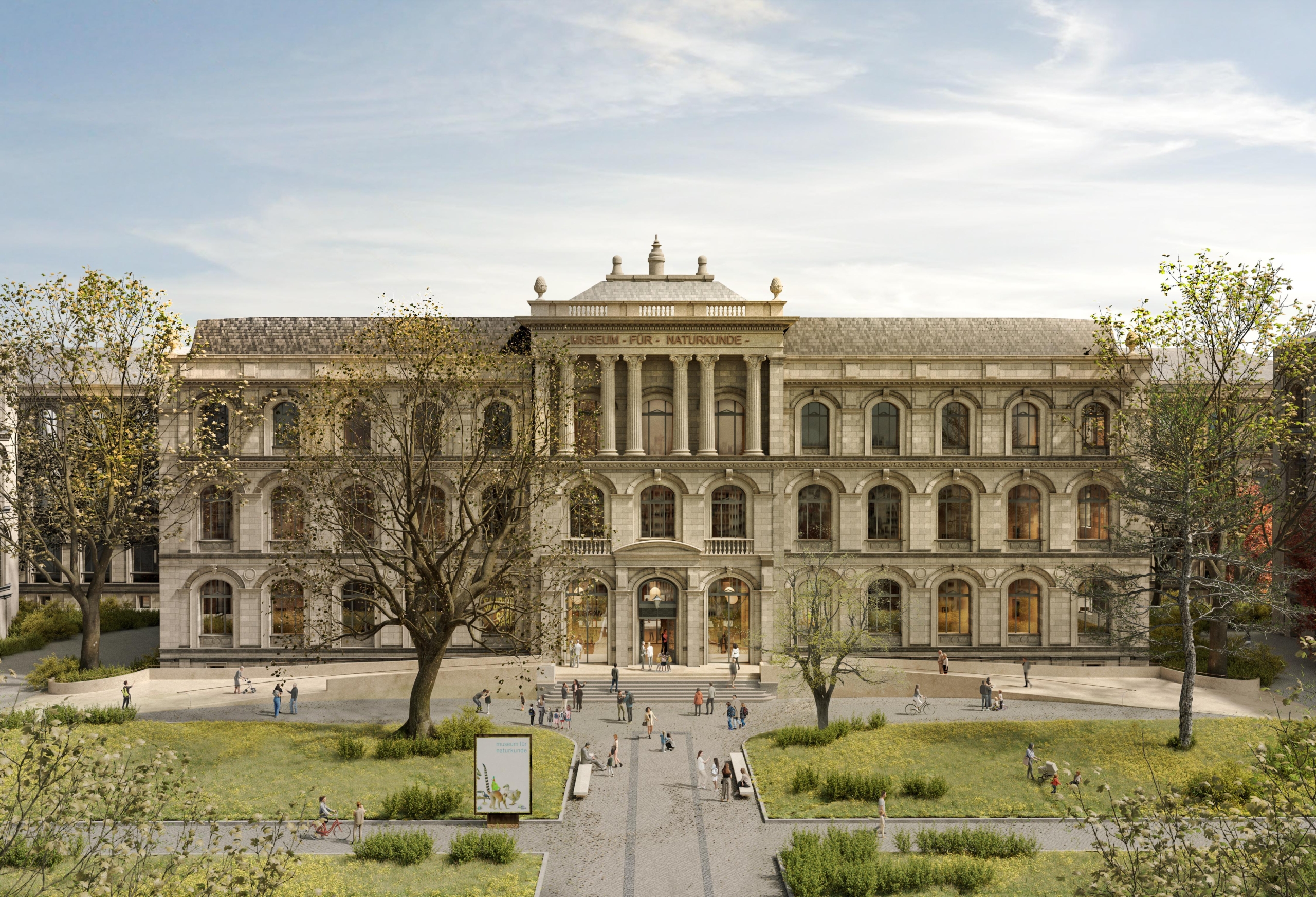
Natural History Museum Berlin
Future plan for the science campus - shortlist for the realization competition
The basic idea behind the design was to transform the campus by redesigning and networking spaces and creating a variety of places for visitors and employees to experience and meet. Particular emphasis is placed on respectful measures that respect the historic building stock and take its development over time into account.
The activation of the various courtyards and intermediate spaces plays a decisive role in the project:
- The welcome courtyard will be transformed into a spacious foyer that welcomes visitors and provides space for an information counter, café and museum store. These changes reduce energy requirements and optimize the use of space.
- The biodiversity courtyard is connected to the museum garden by terracing and barrier-free ramps. It is primarily used for museum education and offers space for educational gardens and educational areas.
- A new dinosaur hall with a platform showing the footprint of the old boiler house is being created in the atrium. A daylight roof and a green atrium in the north wing improve lighting and ventilation
- The Agorahof will become a multifunctional outdoor space with room for outdoor catering and seating steps, which will encourage interaction between researchers and visitors.
- The water courtyard will become an institute garden with experimental areas and seating for the public, accompanied by a moving water surface that improves the microclimate.
- The campus courtyard will be clearly structured to ensure good orientation and provide space for cars, bicycles and open areas.
The forecourt and main entrance will be subtly redesigned to create a pleasant atmosphere. A folded landscape enables barrier-free access. The large entrance staircase will be retained and slightly raised to compensate for the difference in level. Additional entrance doors are proposed to cope with the rush of visitors.
The new buildings, including the barrier-free north entrance, infrastructure buildings at the campus courtyard and a new four-storey building at the north courtyard, complement the ensemble and meet modern requirements.
The open spaces are characterized by openness, diversity and usability and offer different identities in the courtyards. This creates attractive spaces for employees and visitors.
In terms of energy and sustainability, an energy-efficient daylight roof will be installed in the central exhibition courtyard, which will provide true color daylight. Photovoltaic energy and rainwater harvesting contribute to sustainability and improve the microclimate.
The overall aim of the project is to create an open and sustainable research campus that respects the historic building and meets modern requirements.
Curious
become?
Your contact person will be happy to help you.




